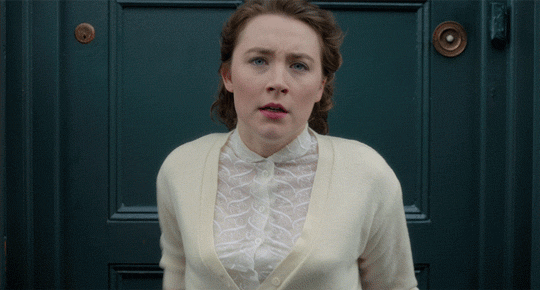Sundance Film Festival favorite and Oscar contender, “Brooklyn,” masterfully depicts a young woman navigating the breach between two homes and an unknowing future.
It follows Saoirse Ronan (“Stockholm, Pennsylvania”) as Eilis, an Irish teenager who embarks to 1950s Brooklyn seeking a better life. After slowly adjusting to her night classes and newfound boyfriend, tragedy sends her back to Ireland, where Eilis struggles to reconcile her two lives and identities.
Though romantic interests provide emotional benchmarks for Eilis’ character, Ronan beautifully depicts her turbulent coming-of-age as an intelligent girl seeking life beyond an Irish bakery or American department store.
This pursuit is exemplified after she meets a charming Italian boy at a dance, who quickly pushes for commitment. Eilis consequently asks a fellow boarder, “Why did you get married?”
Her skepticism surrounding the commitment — despite her inherent loneliness as an immigrant so far from her family — demonstrates Eilis’ resolve to establish her life outside the confines of another individual.
It is this drive that makes stories like Eilis’ all the more spectacular. While “Brooklyn” largely avoids political quagmires, its honest portrayal of immigration highlights the hopes and dreams of so many who come to the U.S. in search of a new life.
Moreover, the film strikes a touching and delicate balance between its namesake, Brooklyn, and Ireland. Based on Colm Tóibín’s novel “Brooklyn,” screenwriter Nick Hornby establishes meaningful parallels and differences between Eilis’ two homes.
In turn, director John Crowley follows Hornby’s lead by allowing Ronan’s raw acting to fill up the frame. Each smile or tear is given equal pertinence in Eilis’ journey.
In addition to Ronan’s excellent performance, costume designer Odile Dicks-Mireaux’s ravishing period pieces, ranging from colorful frocks to the rugby jackets of Eilis’ Irish love interest, make it difficult for audience members to turn away.
But at the core of this film is the question of how to reconcile polarizing identities, and subsequently, futures. “Brooklyn” brings this universal pursuit to the forefront, becoming an emotional expanse for any young person pondering their own fate.
In 1963, Sylvia Plath’s “The Bell Jar” attempted to capture a similar uncertainty. Regardless of its context — Eilis’ quiet, yet poignant life in the U.S. or even in the recently popularized Netflix series “Master of None” — Plath’s words ring true:
“I saw my life branching out before me like the green fig tree in the story. From the tip of every branch, like a fat purple fig, a wonderful future beckoned and winked … I saw myself sitting in the crotch of this fig tree, starving to death, just because I couldn’t make up my mind which of the figs I would choose.”
By the end of “Brooklyn,” Eilis’ “choice of figs” can resonate with any audience member who has been caught between two possible realities. For Eilis, life in the U.S. is not so much the “American Dream,” but her own.


